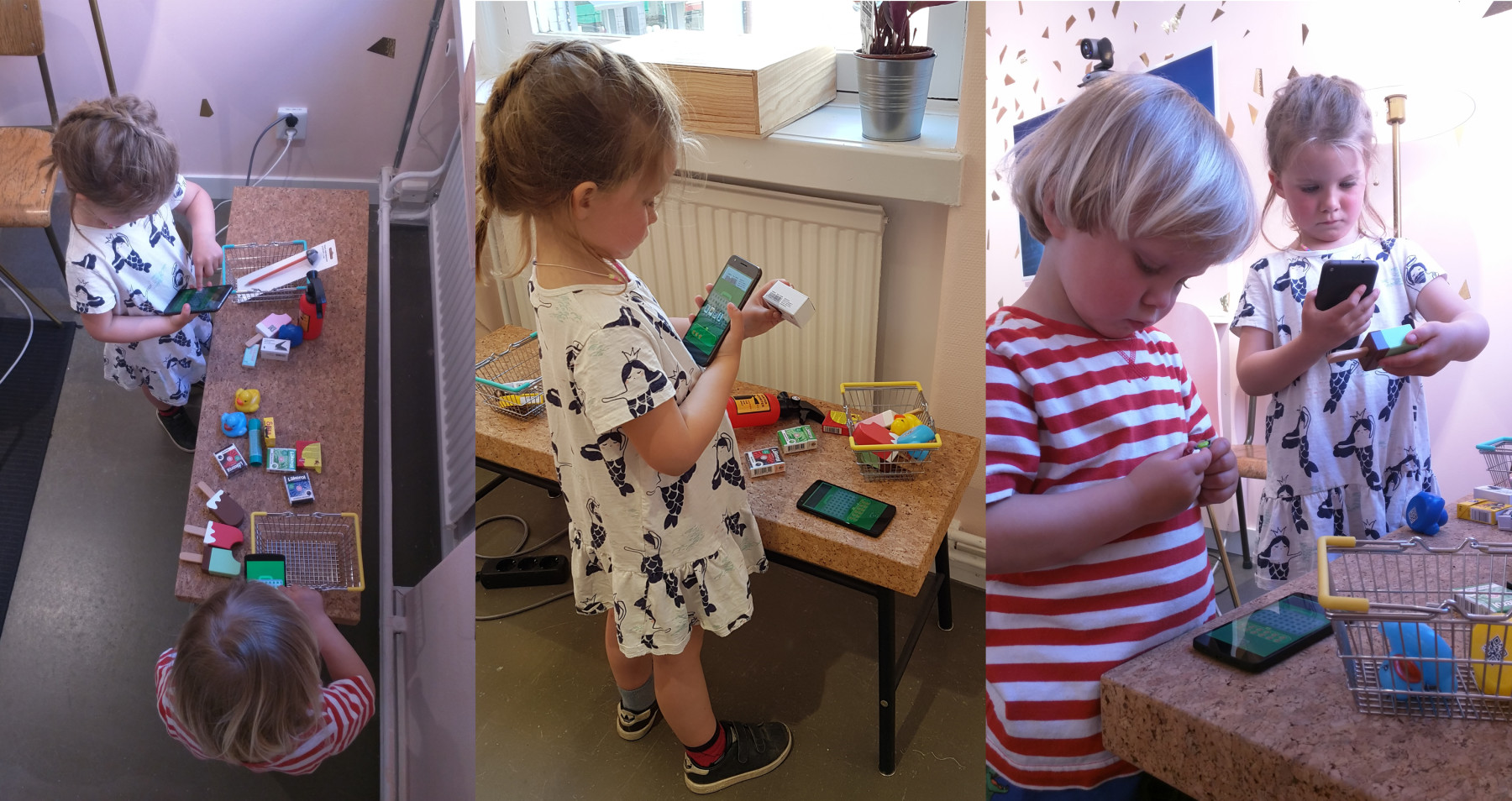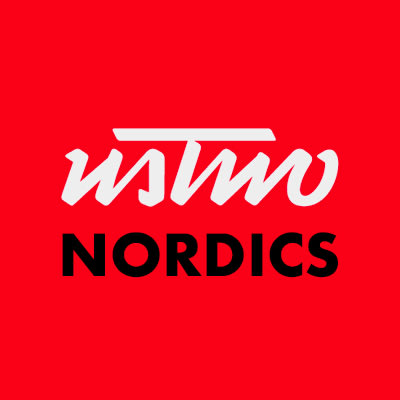In a brainstorm session for our recent PlayLab initiative, we started talking about the relationship between digital and physical experiences. Over the last few years, we're seeing an increased presence of products that combine physical interactions with digital experiences and our idea was to look more closely into the children’s play angle. We decided to start working towards designing a modern version of ‘playing store’ as we also wanted to test and implement barcodes.
The way we use money today is quite abstract, bills and coins are becoming less important and money is ‘hidden’ in credit cards and digital payment alternatives. Playing store was an easy choice as it’s something we’ve all enjoyed growing up and, more recently as parents, seen our own children love as well. In this experiment, for educational purposes, we decided to use coins to symbolise money instead of digits to make the play more concrete and visualize that there’s actually real money involved in shopping.

The digital play store
The current lineup of available play store toys are mostly cash registers which, we believe, are getting a bit outdated. Nowadays, we do most of our grocery shopping either online, using self-scanners or even through apps. This experiment, which we’ve named BlipShop, aims to bring the self-scanning part into the child's play and make playing store more fun and engaging. We wanted children to do this hands-on by using both physical things such as shopping carts, groceries and a digital tool to mirror an actual modern shopping experience.
Working on BlipShop, we used the following criteria:
Fun
From experience, we know having our children help out with self-scanning while grocery shopping is a sure way to keep them engaged. This knowledge was quite useful when designing the scanning process. You get immediate feedback from the characteristic blipping sound when successfully scanning an item and the magic moment when your scanned item suddenly appears. We’ve used sounds and animations as much as possible to emphasize results of user actions such as dropping a coin onto an item in your shopping cart or when scanning an article.
Since we were targeting a young age group, we tried to keep the barrier of entry as low as possible. We visualize things as they look in real life – coins, credit card, shopping basket, the scanned groceries. Making this connection is critical to keep this digital and physical play integrated and understandable.
BlipShop is usable without any text instructions or digits. Using digits instead of coins would have excluded a lot of the younger children. By keeping the money at the bottom of the screen, closest to the player, and making them drag the coins away from themselves, we wanted them to feel that they were giving it away. By limiting them to drag one coin at a time we emphasize the action and try to make them consider their choice.
Open experience
With experience from designing other products for children, we’ve learned that they should be able to play and explore freely and at their own will. BlipShop doesn’t set any rules or boundaries, it is a fun complement to the experience of playing store. It was important to us to not disrupt the play, no menus that could accidentally be opened, no lives that could run out. An experience focusing on play and exploration more than gaming. Whenever they want, the children should be able to scan new items, remove things from the shopping basket or make payments. There is only one screen, no hidden information, no popup dialogs or complex interaction flows, everything important is always visible.
In the hands of the children
We noticed early on that the youngest, around 3 years old, weren’t too eager to integrate BlipShop into their play. They were too easily distracted by the new environment and found the actual scanning mechanic a bit too difficult. However, given more time we believe it’s possible that they could get into it.
The four to six-year-olds on the other hand, have had a lot of fun playing BlipShop. They started scanning and paying for items with little to no introduction. They quickly memorized the pricing of the different items in the store and some scanned all of the items in the store to find out their prices, to make sure they had all the information. Spending exactly all of the available coins, selecting groceries that add up, turned out to be a common way of playing for our four to six-year-olds. An excellent maths exercise, but likely not the most healthy shopping habit.
As we kept testing, we quickly realized BlipShop could be a good opportunity to start teaching children about the value of money while playing. For example, when we gave our testers different assignments to solve, we could observe how they used our material to solve specific tasks such as: “How much are three ice creams?”, “How many rubber ducks can you afford?”. It's also a good way to count out loud together with a teacher or parent.
What can you do now that you’ve spent all your coins? – I can always borrow more from the bank!
Check-out
We were really excited to find BlipShop to be such an appreciated addition to playing store for the children. A typical session could last up to 20 minutes where the children would fill their shopping baskets with groceries, scan barcodes and pay within the app. Once the shopping was complete they would bring the basket over to the parent for feedback. The shopping basket would be emptied, both physically and digitally, and another round would start, over and over again. In the beginning, we were worried the app would perhaps be a distracting element, but it became quite clear that we had created something that worked.
Having achieved this in just two weeks, we’re excited to keep building on similar physical and digital projects going forward. Going forward, BlipShop will get an updated check-out system and a few new features we’ve prioritised after getting feedback from testing in kindergartens and preschools. We’re also working towards testing BlipShop for a longer period in a preschool environment to see how it works long term.
Last, but not least: don’t user test with children using actual sweets as store props, it will definitely distract your test subjects!
BlipShop is available for iOS here!
I want [BlipShop] to scan everything... and the money should never run out.

ABOUT VIKTOR HOLTENÄS AND BJÖRN PERSSON
Viktor and Björn are both developers in the ustwo Nordics. Viktor builds games and apps during the day and plays Mario Kart with his family at night. Björn is a seasoned programmer of digital games who builds physical tree-houses and scavenges flea markets for vinyls.
